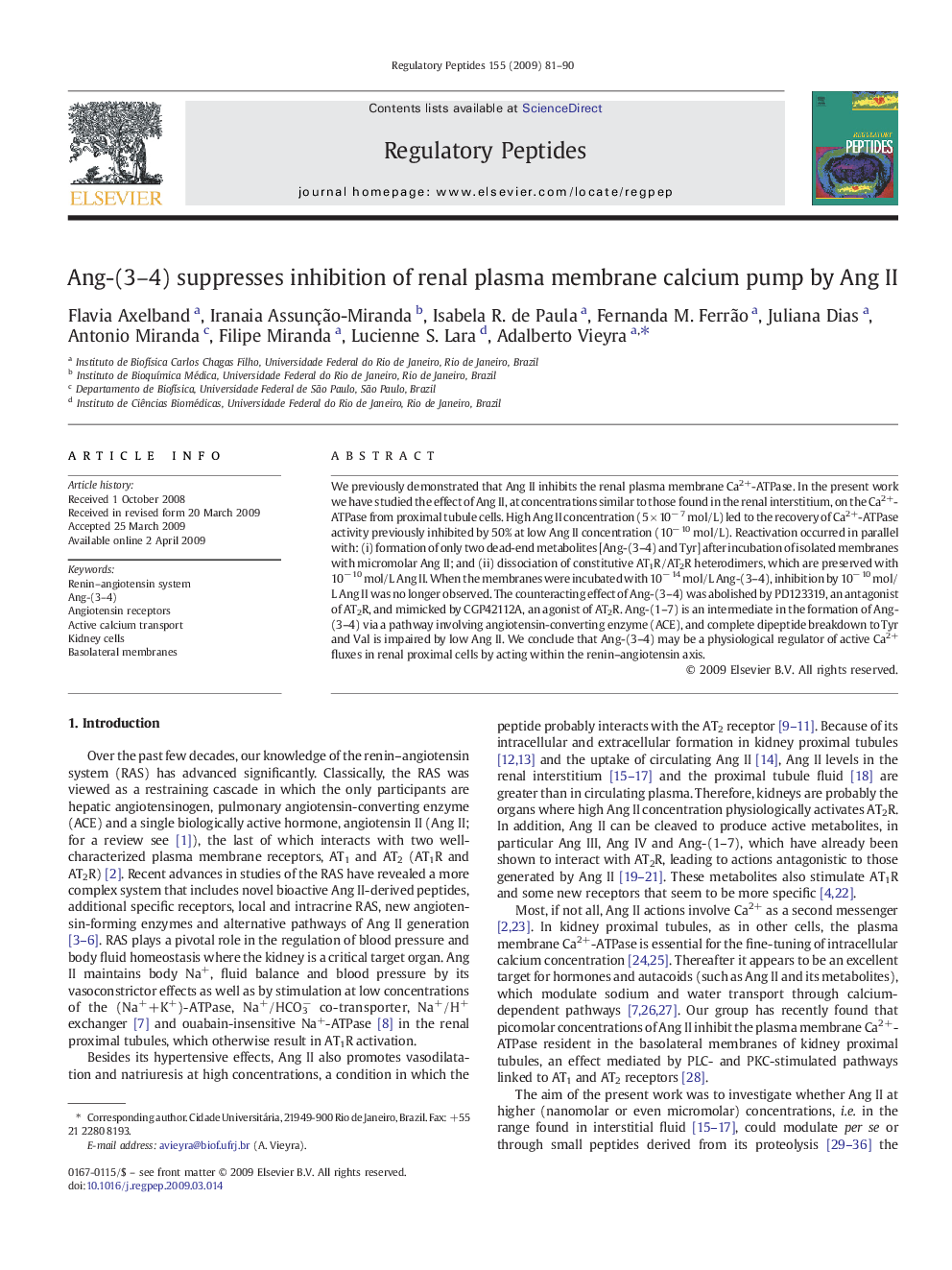| Article ID | Journal | Published Year | Pages | File Type |
|---|---|---|---|---|
| 2023094 | Regulatory Peptides | 2009 | 10 Pages |
We previously demonstrated that Ang II inhibits the renal plasma membrane Ca2+-ATPase. In the present work we have studied the effect of Ang II, at concentrations similar to those found in the renal interstitium, on the Ca2+-ATPase from proximal tubule cells. High Ang II concentration (5 × 10− 7 mol/L) led to the recovery of Ca2+-ATPase activity previously inhibited by 50% at low Ang II concentration (10− 10 mol/L). Reactivation occurred in parallel with: (i) formation of only two dead-end metabolites [Ang-(3–4) and Tyr] after incubation of isolated membranes with micromolar Ang II; and (ii) dissociation of constitutive AT1R/AT2R heterodimers, which are preserved with 10− 10 mol/L Ang II. When the membranes were incubated with 10− 14 mol/L Ang-(3–4), inhibition by 10− 10 mol/L Ang II was no longer observed. The counteracting effect of Ang-(3–4) was abolished by PD123319, an antagonist of AT2R, and mimicked by CGP42112A, an agonist of AT2R. Ang-(1–7) is an intermediate in the formation of Ang-(3–4) via a pathway involving angiotensin-converting enzyme (ACE), and complete dipeptide breakdown to Tyr and Val is impaired by low Ang II. We conclude that Ang-(3–4) may be a physiological regulator of active Ca2+ fluxes in renal proximal cells by acting within the renin–angiotensin axis.
